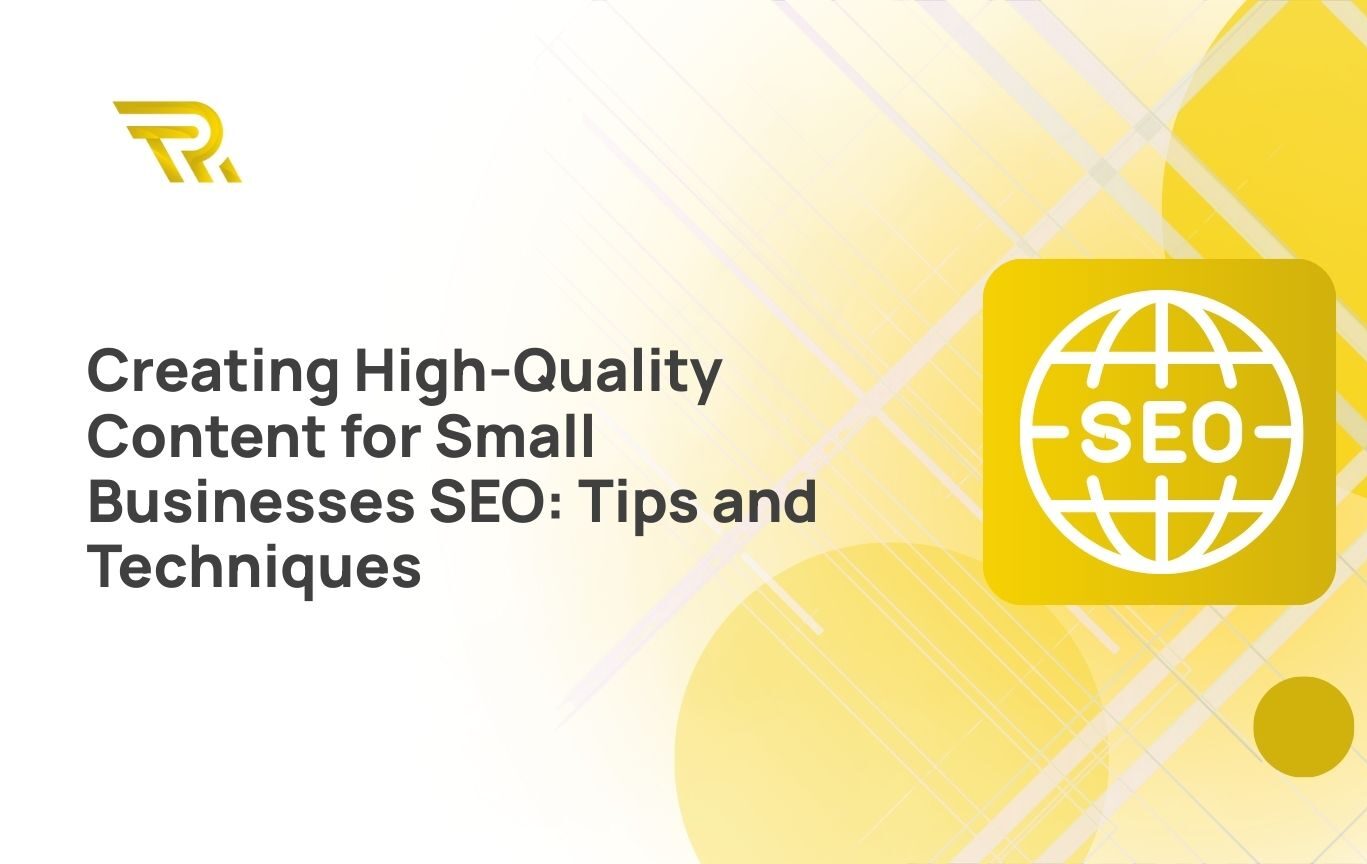Did you know that when people search for things on their phones in their local area, 78% of the time, it leads to them buying something in a nearby store? That’s a strong sign that they really want to buy something. That’s one reason why choosing local SEO for small businesses.
When you use local SEO, you’re mainly competing with other businesses in your neighborhood. It’s a good way to avoid the tough competition for the top spots in national online searches. However, getting local SEO right can be tricky.
If you’re having trouble getting started with your local SEO efforts, here are ten tips that can help any small business.
Key Takeaways
Local search engine optimization (SEO) is crucial for small businesses as it helps them attract local customers who are actively searching for products or services in their area.
Google My Business (GMB) improves visibility on Google Maps and local search results, provides accurate business information, and encourages customer reviews.
Conducting keyword research specifically targeting local search terms is vital. By including location-based keywords in your website content, meta tags, headings, and URLs, you can enhance your website’s visibility in local search results.
Why is Local SEO Important for Your Small Business?
Local SEO for small businesses is essential for you because it directly impacts your local business’s visibility and success. When people in your area search for products or services like yours, local SEO ensures that your business appears at the top of search results. For instance, if you own a hardware store, when someone nearby searches for “hardware store near me,” local SEO helps your store show up prominently. This is crucial because it drives more foot traffic to your store and increases the chances of local customers finding and choosing your business over competitors. It’s like ensuring that your shop has a prime location in the heart of your town, making it easy for people to discover and visit your establishment, ultimately leading to more sales and growth for your local business.
When focusing on local SEO for small businesses, tracking important SEO metrics like local keyword rankings, website traffic from local searches, and the number of positive local reviews is crucial for measuring your campaign’s effectiveness and local online visibility.
Effective Local SEO Tips for Your Small Business
Here are the common steps for your local SEO strategy:
Ensure the Security of Your Online Visibility via Listings
The initial step in building a strong local SEO strategy for small businesses is to ensure your business is well-represented in online directories and local business listings. Online directories like Google My Business (GMB), Yelp, Bing Places, and Yahoo Local are essential resources for customers searching for local businesses.
Among these directories, Google My Business carries the most weight. Creating a comprehensive and detailed Google Business profile provides search engines with vital information about your business. This includes your business name, address, phone number, operating hours, product or service categories, and even photos of your establishment.
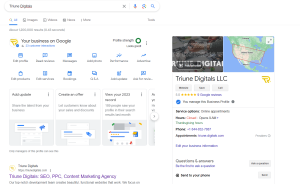
What is NAP?
In the realm of local SEO, NAP refers to the essential business information: the name, address, and phone number (including the area code). It’s crucial to ensure that your NAP is presented as text that search engines can crawl on your website. This helps Google provide more accurate location-based search results.
A valuable tip for local SEO is to maintain consistency in your NAP information across all platforms.
Here’s a pro tip: Avoid the common error of embedding the NAP solely within an image, as search engines can’t analyze images the way they can with HTML text.
Typically, you’ll find the NAP displayed in either the footer or header of a website. It’s also important to include your NAP on a dedicated “Contact Us” page for comprehensive visibility and accessibility.
Moreover, having your business listed in local directories that are relevant to your industry or location significantly boosts your visibility. This sends powerful signals to search engines regarding your business’s relevance in local searches, further strengthening your local SEO endeavors.
It’s crucial to maintain accurate and consistent information across all these listings. Incorrect details or duplicate listings can lead to confusion for both search engines and potential customers. This confusion can negatively impact your local SEO performance and potentially result in lost sales.
Get More Customer Reviews
Having lots of positive reviews is super important for making your business show up better in online searches. Now that you have places where these reviews can be seen, you want to try and get as many as you can.
Wondering how to do it? Well, the first step is to make it simple. If you run an online store, you can send customers an email later on and ask them to share their thoughts in a review.
But if you have a physical store, like a shop or restaurant, you can ask for reviews in person. For example, you could put a request on your business card or on the receipt you give to customers.
Here’s something to remember: Some websites where people leave reviews have different rules. For example, Yelp! doesn’t allow businesses to directly ask for reviews. So, to make things easier, it’s often a good idea to suggest that customers leave their reviews on your Google My Business page instead.
Optimize Local Searches for Mobile SEO
It’s no surprise that 82% of people use their phones for local searches. So, when it comes to local SEO, integrating effective mobile SEO is essential for improving visibility and attracting local customers. If your website on mobile is slow or doesn’t work properly, you might miss out on lots of potential customers.
The good news is, it’s pretty easy to make your website mobile-friendly. You can choose a special type of design called a “responsive WordPress theme.” This makes sure everything on your website looks good and works on mobile phones.
You can also make it even better by using a tool like “WP touch,” which can help create a mobile-friendly version of your site without too much effort.
But it’s not just about looks – how fast your site loads on mobile is crucial too. Did you know that more than half of people using their phones will leave a small business website if it takes more than 3 seconds to load? That’s a lot of potential customers you could lose if your site is slow.
And here’s one more thing to know: Google not only looks at how fast your regular website loads but also how fast your mobile site is. If your mobile site is speedy, you’re more likely to show up higher in search results and keep visitors from leaving your site too quickly.
If your website is still slow even after you’ve tried to make it faster, you might want to think about upgrading your hosting plan or even getting a dedicated server. Yes, it can be a bit more expensive, but it will make your website work much better for you and your visitors.
Do Local Keyword Research
When it comes to making your business more visible online, one important thing you should do is called “keyword research for small business.” This means finding the words and phrases that people use when they search for businesses like yours. And if you want to attract local customers, you need to find words that include your location.
There are helpful tools like Google’s Keyword Planner and Moz’s Keyword Explorer that can assist you in this task.
Local keywords usually include the name of a place. For example, if you run a small coffee shop and want to attract local customers, you might use keywords like “coffee shop in Seattle” or “best espresso in Capitol Hill.” When you use these kinds of keywords on your website, it tells search engines that your business is relevant to these local searches, which can help more people find you.
Make Your Website Content Search-Friendly
When you create new blog posts or pages on your website, you’re essentially adding new opportunities to show up in search engine results. Each piece of content can target specific geographic search terms, helping you get found by people looking for local information.
To make your content search engine-friendly, you should use keywords related to your location in the URL, title, headers, meta description, and the actual content of your page. SEO-friendly URL structure that includes relevant keywords and location information can also enhance your local SEO efforts. If you’re struggling to come up with content that’s specific to your location, you can consider featuring stories of satisfied customers or showcasing case studies.
The more details you include in these elements, especially for each location of your business if you have multiple, the better you’ll be able to optimize your website for “near me” local searches, making it easier for potential customers to find you locally.
Develop Content with a Local Focus
As search engines like Google become more advanced, content creators can now focus more on writing for users and less on just trying to please search engines. While writing about broad topics can attract a large audience, sometimes it’s more important to narrow your focus and create high-quality content for SEO about local or industry-specific news to draw in a local audience.
You can establish yourself as an authority in your local industry by sharing information about local industry events, news, your employees, and other educational content on your blog. Think about creating content that’s at the top of the funnel, which means it goes beyond simply promoting your products or services.
For example, if you run a local security company and want to attract businesses that are new to the area, you could create a useful resource to help these businesses become familiar with your city. This could include a map of local service providers or a calendar of city-wide events, providing value to your target audience while also including highly relevant local information on your website.
Strengthen Your Local SEO with Backlinks
Backlinks, which are links from other websites to your own, play a crucial role in local SEO. White-hat link building through active community engagement can significantly contribute to improving your website’s credibility and local search rankings.
For small businesses focusing on local SEO, getting local backlinks is especially important.
In the context of local SEO, white-hat link building through active community engagement can significantly contribute to improving your website’s credibility and local search rankings.
One effective way to get local backlinks is by actively engaging with your local community. You could sponsor a local event, participate in community activities, or contribute a guest post to a local blog. These efforts not only increase your business’s visibility and reputation but also help you earn valuable backlinks that enhance your local SEO strategy.
Getting Ready for Voice Search
As voice-activated devices like Amazon’s Alexa, Apple’s Siri, and Google Assistant become more popular, your small business needs to pay attention to voice search SEO. When people talk to these devices, they often use different words than when they type on a keyboard, and their questions can be more like a conversation.
This is important in local SEO for small businesses because many voice searches are about local things. For instance, someone might ask their smart device, “Where’s the nearest Italian restaurant that’s open now?” To make sure your business shows up in these voice searches, you should use natural, conversational language and longer, more specific keywords in your website content.
Also, keep Google My Business for small businesses listing updated because many voice devices use it to give people answers. Having a Frequently Asked Questions (FAQs) section on your website can help too because it matches the way people ask questions when using voice search.
Local SEO might seem complicated, but it’s all about helping local customers find and connect with your business easily. Each of these steps we’ve talked about is a way to make sure search engines and local customers can find you. By working on all of them, you’ll build a strong foundation for success in local SEO.
Best Local SEO Tools You Need to Try
Now that we’ve discussed strategies for optimizing your business’s local SEO, let’s explore some practical tools you can utilize to enhance your rankings in the areas that matter most.
Whitespark Local Citation Finder
A local citation refers to any online mention of your local business’s name, address, and phone number. Citations are crucial as they play a significant role in surfacing local businesses in online searches. When local businesses actively manage their citation sources to ensure data accuracy, it fosters trust in these online listings. Whitespark excels in this domain, offering services such as local listing management, recommendations on where to list your business, competitor analysis, and robust monitoring of your citation growth to improve local search rankings.

Image source: whitespark.ca
Screaming Frog
This desktop program performs comprehensive website crawls from an SEO perspective, examining links, images, CSS, scripts, and apps. Whether you’re looking to identify 404 errors or missing meta descriptions and H1 tags, Screaming Frog can analyze up to 500 URLs for free, with unlimited URL analysis available in its paid version.
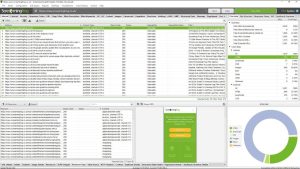
Moz Local
Moz Local, more cost-effective than many alternatives, ensures that your business listings are verified on Google and Facebook. It also distributes your listings across the search ecosystem. Additionally, Moz Local collaborates with data aggregators to enhance listing visibility.
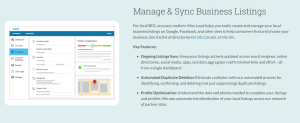
Ahrefs
Ahrefs specializes in backlink checking, a critical aspect of determining website authority. It offers valuable features such as competitor analysis, keyword research, and insights into the anchor text used when backlinking to your site from other websites.
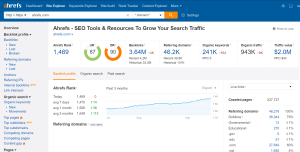
Image source: phil-isherwood.co.uk
BrightLocal
BrightLocal offers a comprehensive suite of SEO tools tailored specifically to meet the needs of local businesses. It assists in generating and monitoring reviews on local websites, evaluating your local search performance, and analyzing your local competitors. Moreover, BrightLocal provides features such as client access and white-labeled reporting, making it a suitable choice for both agencies and brands.”

Image source: agencyanalytics.com
Remember, in local SEO for small businesses, it’s important to work on both on-page SEO for small businesses, which means making your website content and structure better, and your off-page SEO, which includes getting other local websites to link to yours and being active in your local community online.
Final Thoughts
Your online presence is an essential component of your business’s overall success. By implementing a comprehensive local SEO strategy, you can stand out from the competition, attract more customers, and drive sustainable growth for your small business.
If you require assistance in optimizing your website for local searches, consider investing in professional SEO services to maximize your online potential.
FAQs
How can I track the success of my Local SEO efforts?
Tracking the success of your Local SEO efforts can be done using tools like Google Analytics and Google Search Console. Monitor key performance indicators (KPIs) such as organic traffic, search rankings, click-through rates, and conversions. You can also use call tracking and online reviews to gauge customer feedback and sentiment.
How long does it take to see results from Local SEO efforts?
The timeline for seeing results from Local SEO can vary depending on factors like competition, the current state of your online presence, and the strategies you implement. Generally, it may take several months to see significant improvements in local search rankings.
What tools and resources can help with Local SEO for small businesses?
There are several tools and resources available to assist with Local SEO, including Google’s Keyword Planner, Google Analytics, Moz Local, SEMrush, and various online guides and courses. Utilizing these resources can help you effectively manage your Local SEO efforts.




